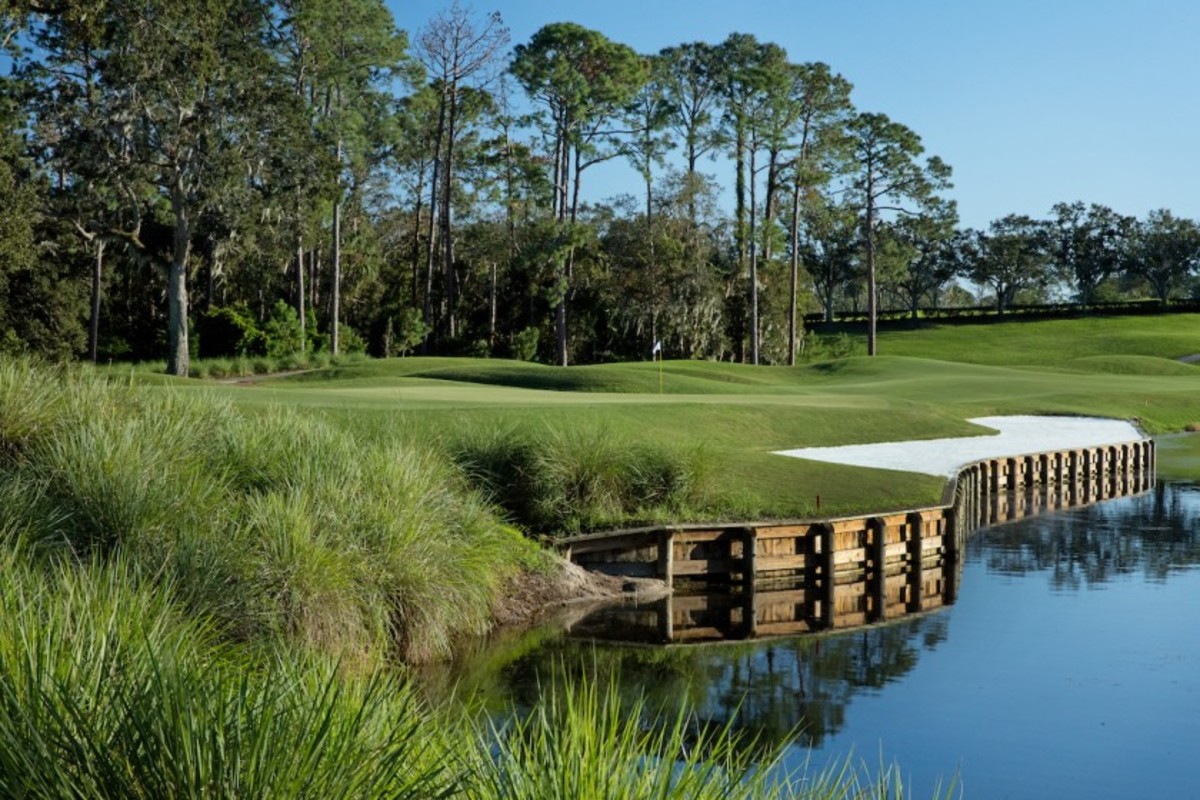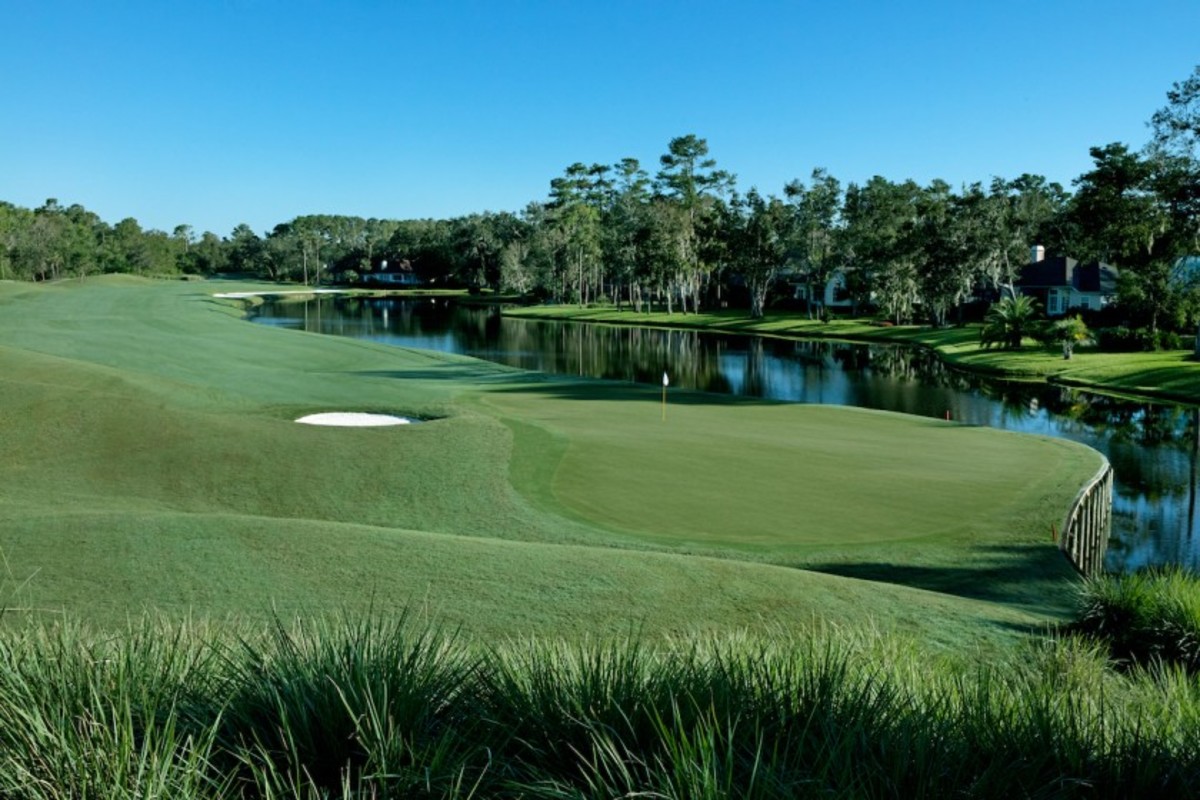TPC Sawgrass’ Dye’s Valley deserves attention

Tom Alter stands on the 12th teeing ground of Dye’s Valley at TPC Sawgrass and marvels at the topography that stretches out in front of him. “This is a hole that really reveals the genius of Pete Dye,” he says.
Alter, vice president of communications for the PGA Tour, points first to a vast water hazard that runs the entire left side of the short par 4, then to the imposing hillocks and mounds that rise more than 15 feet on the opposite side of the narrow fairway.
When evaluating the hole from the tee, players will recognize immediately that the rough-covered moguls on the right are the place to miss if their tee shots don’t find the fairway — a misfired drive to the left will likely sink to a watery grave. Of course, players who bail out too much and miss to the right will likely find that their second shot includes an awkward stance and an awkward lie, neither of which improves the odds of hitting the hole’s elevated green in regulation.
Despite those strategic implications — which convey Dye’s brilliance as a course architect — the genius that Alter references pertains to Dye’s ability to create interesting golf courses out of thin air. When Dye and course co-designer Bobby Weed first surveyed the site for the Dye’s Valley course, the entire plot of land was not only flat but also level with the surface of the water along the 12th fairway.

In fact, the entire property at TPC Sawgrass was a flat marshland when Dye first broke ground on the Stadium Course in February 1979, and much has been made of the hillsides that Dye created on that revolutionary course. Then PGA Tour commissioner Deane Beman issued a directive that he wanted to create a championship venue for golf defined, in part, by vast areas that provided spectators with unobstructed views of the action. Yet those hills and slopes on the Stadium Course are often overshadowed by the grandstands that are almost permanently erected across the layout.
Furthermore, almost 40 years of televised broadcasts of the Players Championship skew visitors’ perspective of the course, conditioning them to first think of famous shots hit on pivotal holes rather than to focus on the actual landscape in front of them.
So while Dye’s Valley brings more of the revered architect’s earth-moving skills into the spotlight, the 6,847-yard, par 72 layout, which opened for play in 1987, is a venue that can also provide distinctive playing experiences.
RELATED:Have Clubs Will Travel: TPC Sawgrass
When gearing up for a round on “the Valley,” as the course is often referred, it’s best to first understand how the two TPC Sawgrass venues are similar. Both courses reflect Dye’s overall design philosophy of rewarding players who successfully hit the more demanding tee shot, while players who take a more conservative approach with the first shot are faced with a more daunting second one. A player’s scorecard can also collect big numbers in a hurry on both courses, but those scores will be accrued in different ways.
“You might not lose a ball on the Stadium Course and still shoot 100,” said Montrele Wells, who has worked as a caddie at TPC Sawgrass for four years. “That’s just the reality of it.”
Lost balls — specifically those whose disappearances are punctuated by a splash — are a far more likely reality on Dye’s Valley, especially for players who struggle with inaccuracy off the tee.

“The reality is, if you spray it on the Valley you can get in just as much trouble as you can on the Stadium Course,” Alter said. “It’s not as intimidating visually, so it looks like you have more space than you actually do. But there’s a lot of water on the Valley course, and if you’re hitting it sideways you will pay the price.”
“If you don’t get off the tee well, you’re going to rack up penalty shots really quick,” said Brian Riddle, TPC Sawgrass’ head professional.
The course benefited from a seven-month renovation back in 2014, just before it hosted the Web.com Tour Championship. Overseen by Milan Moore, a course design associate for the PGA Tour, that renovation included the reconstruction of all tee boxes and green complexes, which also restored the original dimensions of all 18 putting surfaces. The course was retrofitted with a more efficient irrigation system, and it was replanted with Celebration Bermudagrass on the fairways and tee boxes, as well as TifEagle Bermudagrass on the greens.
Despite it hosting the Web.com Tour Championship for three years and more recently hosting the Korn Ferry Challenge in June 2020, Dye’s Valley remains a hidden gem in Ponte Vedra Beach, Fla., if only because the neighboring 18 holes comprise one of most prolific courses and also include one of the world’s most famous holes.
“It flies under the radar on a national level,” said Riddle of Dye’s Valley. “If the course was picked up and moved somewhere else, I truly feel it would get many more accolades.”
That said, the course isn’t undervalued by everyone. In particular, locals and TPC Sawgrass members are quite aware of the high-quality course in their own backyard, a course which doesn’t attract as much attention from outsiders. Because of that, more rounds are played on Dye’s Valley over the course of a year than they are on the Stadium Course.
“We sell a membership to the Valley golf course and it’s just exploded over the last few years,” Riddle said. “People around here have realized what a great golf course it is. It’s always in great condition, and they’ve learned it’s a great opportunity and they’re taking advantage of it.”
